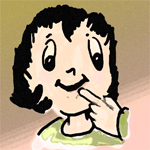Copyright © University of Cambridge. All rights reserved.
'Cube Drilling' printed from https://nrich.maths.org/
Show menu
Why do this problem?
The whole idea of this problem is to invite children to picture something in their mind. Pupils will need to be familiar with properties of a cube. Visualising, in this problem, includes picturing something in your head and "doing something to it". This is a useful tool to have when solving problems. The problem focuses entirely on visualisation in order to encourage pupils to have a go at imagining. The more opportunities we give children to practise visualisation, the more comfortable they will become with using it of their own accord. Those pupils who manage it may very well wonder "What would happen if . . .?" and their curiosity starts being put into place and they therefore continue to explore further.
Possible approach
Ideally, it would be good to encourage your class to tackle this challenge purely by trying to imagine what is happening.To convince you and each other of their solutions, they will need to explain particularly carefully what they are picturing, which can be quite tricky, and you may find that they gesticulate rather a lot! In order to reach a joint conclusion, you might find it helpful to make a model of the cube from interlocking cubes.
Key questions
When you drill your holes, can you picture which small cubes have got holes in them?How many do you drill holes in?
Now think about your friend. Can you picture the small cubes that he or she drills holes in?
Are any of the cubes your friend drills ones that you've already drilled?
Are some of these cubes ones that you haven't already drilled?

